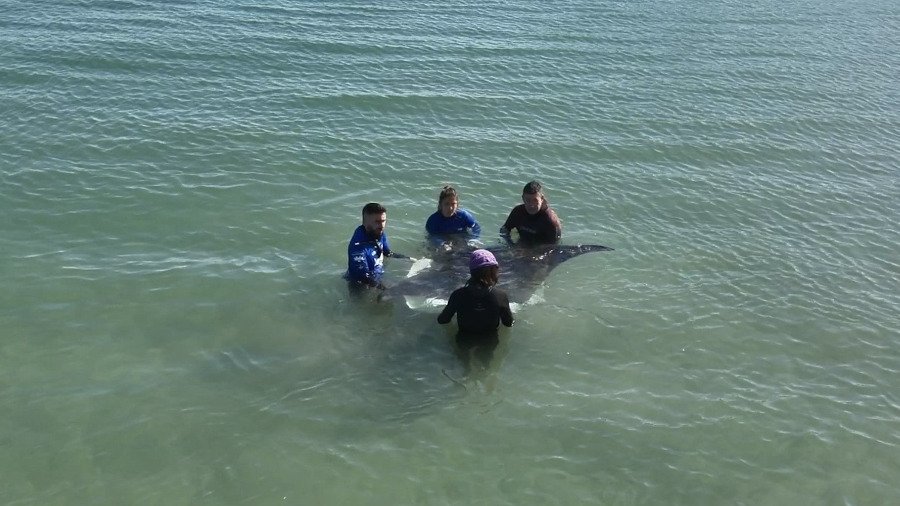Research into the unusual increase in manta ray strandings on Spanish beaches
A team of specialists with the participation of the UAB has documented some twenty cases during the spring in Catalonia, Valencia, Andalusia and the Balearic Islands.

The presence of sharks and rays in the Mediterranean is common, particularly in warm seasons such as spring and summer. Among these species is the manta (Mobula mobular), a filtering ray mainly inhabiting the open sea and is in danger of extinction according to the International Union for Conservation of Nature (IUCN).
In recent years, several monitoring groups have documented an increase in the number of manta rays seen along the coasts of the Spanish Mediterranean, both peninsular and insular.
However, the increase is not limited to sightings; an increase in the number of strandings has also been detected, with about 20 cases recorded this spring on beaches in Catalonia, Valencia, Andalusia and the Balearic Islands.
In view of this situation, a working group of specialists from different entities of the Spanish Mediterranean, including UAB researchers Mariano Domingo, from the Department of Animal Health and Anatomy, and Francesc Padrós, from the Department of Animal Biology, Plant Biology and Ecology, has been created in the past week to try to give a coordinated response to this phenomenon. Currently, the option most supported by experts is that the strandings are associated with multiple factors simultaneously, since the cases recorded so far do not follow a clear pattern.
For this reason, the group has established common guidelines and is carrying out various pathological and environmental analyses to identify exactly the factors that could be influencing the strandings of manta rays that have been occurring in these past few days.
To continue in this line of work, specialists recommend giving immediate notice to the authorities, by calling 112, when sighting mantas, which will allow early assistance to the animals that approach the beaches. It is essential not to further stress stranded individuals. They should not be handled or reintroduced into the sea. In addition, it is recommended to keep a safe distance without losing sight of them.
Records indicate that the presence of manta rays in Spanish Mediterranean waters is increasing, thus underlining the importance of these waters for the life cycle of this species. This is of special interest, especially considering the potential threats present in the region and the current conservation status of this species. Thus, the collaboration between entities and the support of the public will allow researchers to better understand this species and develop effective conservation measures.
Participating entities
Ministry for Territory, Housing and Ecological Transition of the Government of Catalonia, Universitat Autònoma de Barcelona, Institut de Ciències del Mar (ICM-CSIC), Associació Catsharks, Fundació CRAM, Conselleria de Medi Ambient, Infraestructures i Territori of the Government of Valencia, University of Valencia, Oceanogràfic Foundation, Fundación Azul Marino, Associació Lamna, IMEDMAR-UCV, Conselleria d’Agricultura Pesca i Medi Natural del Govern Balear, Palma Aquarium Foundation, Save the Med Foundation, Marilles Foundation, Seashore Environment & Fauna, and the Spanish Ministry of Ecological Transition and Demographic Challenge.
The UAB, with Sustainable Development Goals
Life below water